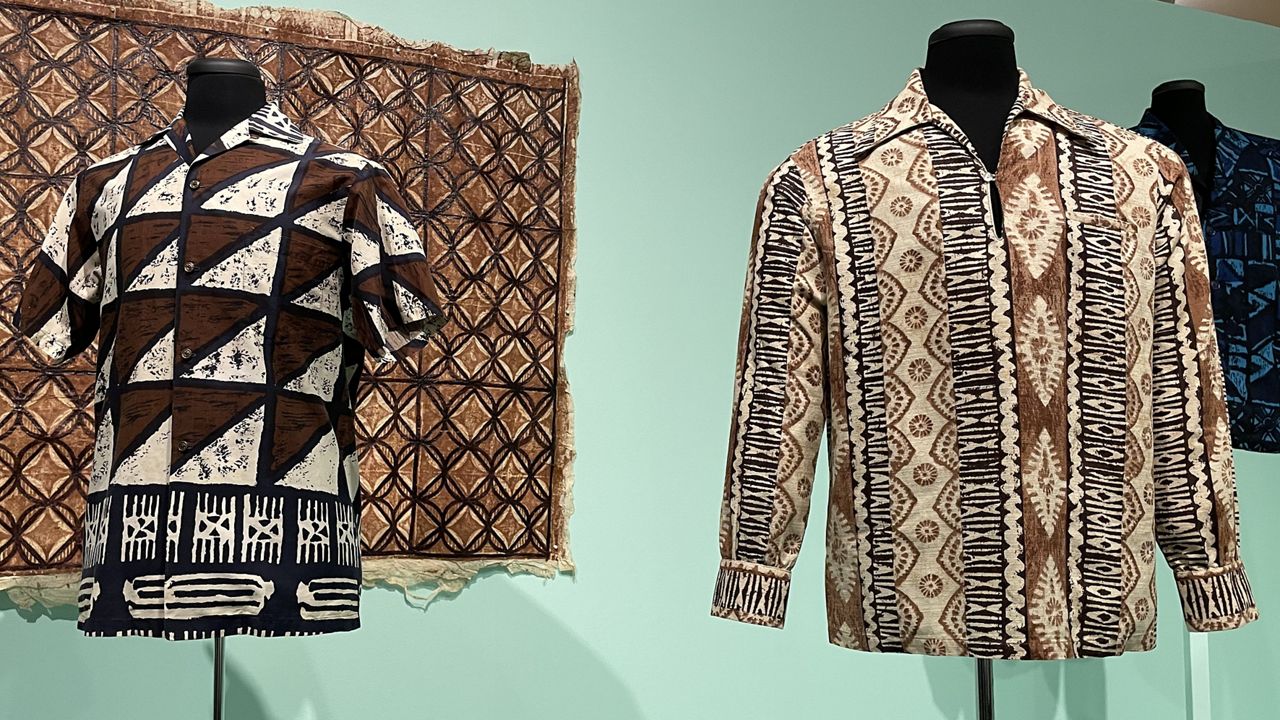HONOLULU — In Hawaii, colorful flower-filled shirts and dresses are synonymous with fashion.
“Fashioning Aloha,” a new exhibit on view at the Honolulu Museum of Art from April 12 to Sept. 1, 2024, explores how aloha wear has evolved.
Tory Laitila, curator of textiles and historic arts of Hawaii, focused the exhibit on what has inspired aloha wear prints: flowers, bark cloth, Asian motifs, Tahitian pareu, location (i.e. a "wearable postcard"), and Hawaiian history, music, hula and quilting.
The exhibit features men’s aloha shirts and women’s dresses. While the term muʻumuʻu is usually used as a catch-all for aloha dresses, the holukū, muʻumuʻu and holomū are three distinct styles.
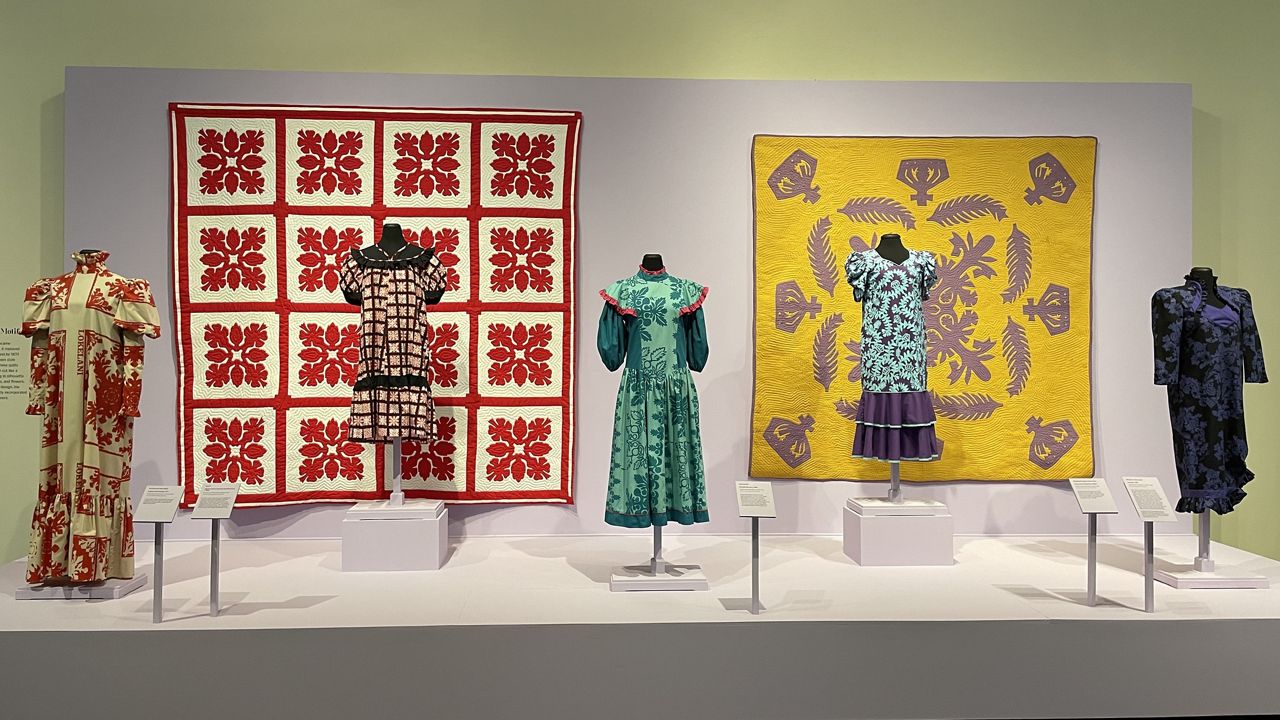
The first holukū, a floor-length gown with sleeves and often a train, was made for Queen Kalākua Kaheiheimālie in the 1820s. She asked American Protestant missionary women to sew her a dress inspired by Western fashion with fabric she acquired from China.
“The garment itself comes from aliʻi women wearing Western clothing as a status symbol,” Laitila said during a preview of the exhibit on Thursday.
In the early 1800s, imported cloth was still very expensive, so some Hawaiian women would make holukū with tapa, stamping it with a paisley print to mimic printed cotton. In the 1850s, fabric prices dropped and wearing holukū became more common.
The muʻumuʻu, typically ankle-length or shorter, was originally designed as an undergarment for the holukū, but later evolved into a house dress.
“It’s in the 1930s that we get the term ‘aloha shirt,’” Laitila said. The term "aloha shirt" first appeared in print in an advertisement for Musa-Shiya Shoten, Ltd. Laitila described the 1930s as the Art Deco era of Hawaii, a time when tourism was increasing in Hawaii as commercial airplanes brought more people to the islands, and floral fabrics designed specifically for clothes in Hawaii were first manufactured.
Linda Arthur Bradley, a former costume and textile professor at the University of Hawaii at Manoa, gifted her collection of aloha wear to HoMA after learning her former student, Laitila, was a curator at the museum. Her gift was the impetus for the exhibit, according to Laitila.
Laitila included 15 garments from Bradley’s collection in “Fashioning Aloha” and another 38 garments are on loan from designers and collectors in the community.
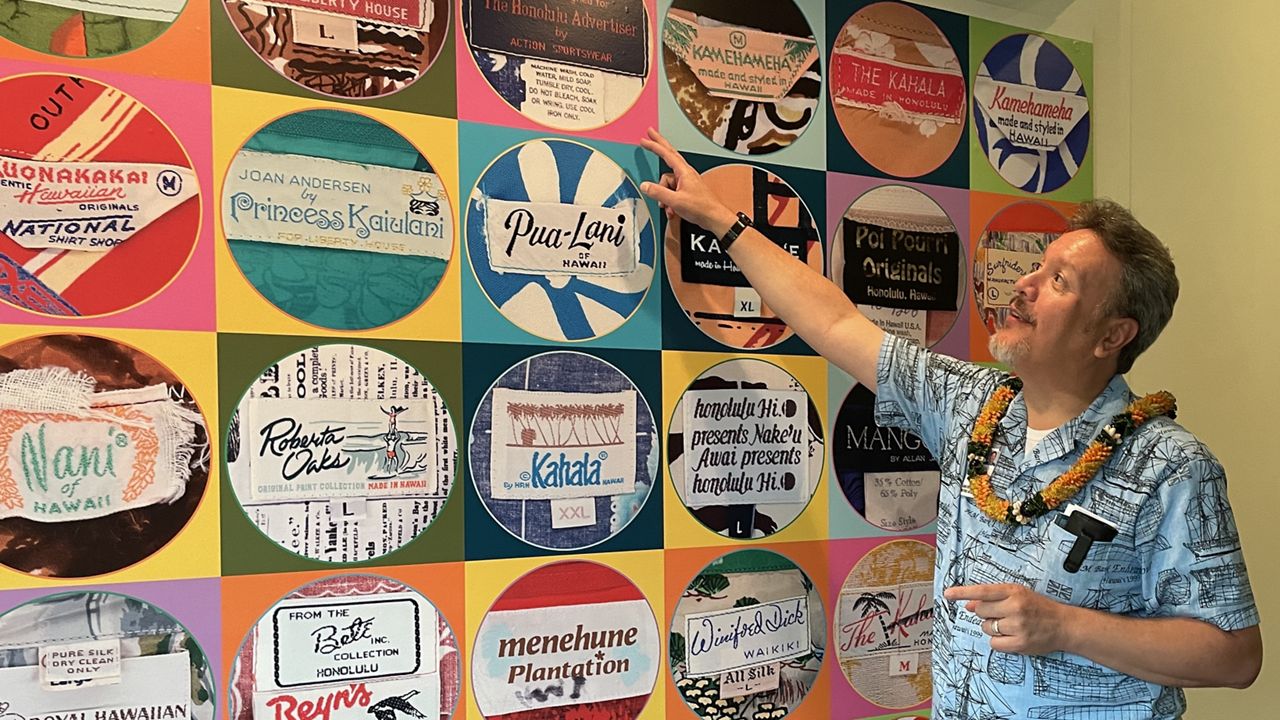
For some museum goers, “Fashioning Aloha” will be a nostalgic journey into the past, as many of the designers featured in the exhibit no longer exist, like Allen Akina, Don Loper, Allan James, Kramer’s and Surfriders Sportswear. A slideshow also features photos residents submitted of themselves, their family and friends dressed in aloha wear from now to 1935.
But not everything is from the past. Laitila believes aloha wear is just as popular as it ever was and the exhibit includes a handful of newer designers. HoMA is hosting a panel at 7 p.m. April 19, 2024, at the Doris Duke Theatre with three newer designers, Nake‘u Awai, Kenneth “Aloha” Victor and Roberta Oaks, who oversee the entire process as the designer, manufacturer and manager of their own shops. The panelist will discuss how they got their start in fashion and the inspirations for their aloha wear.
Below see photos from the exhibit:
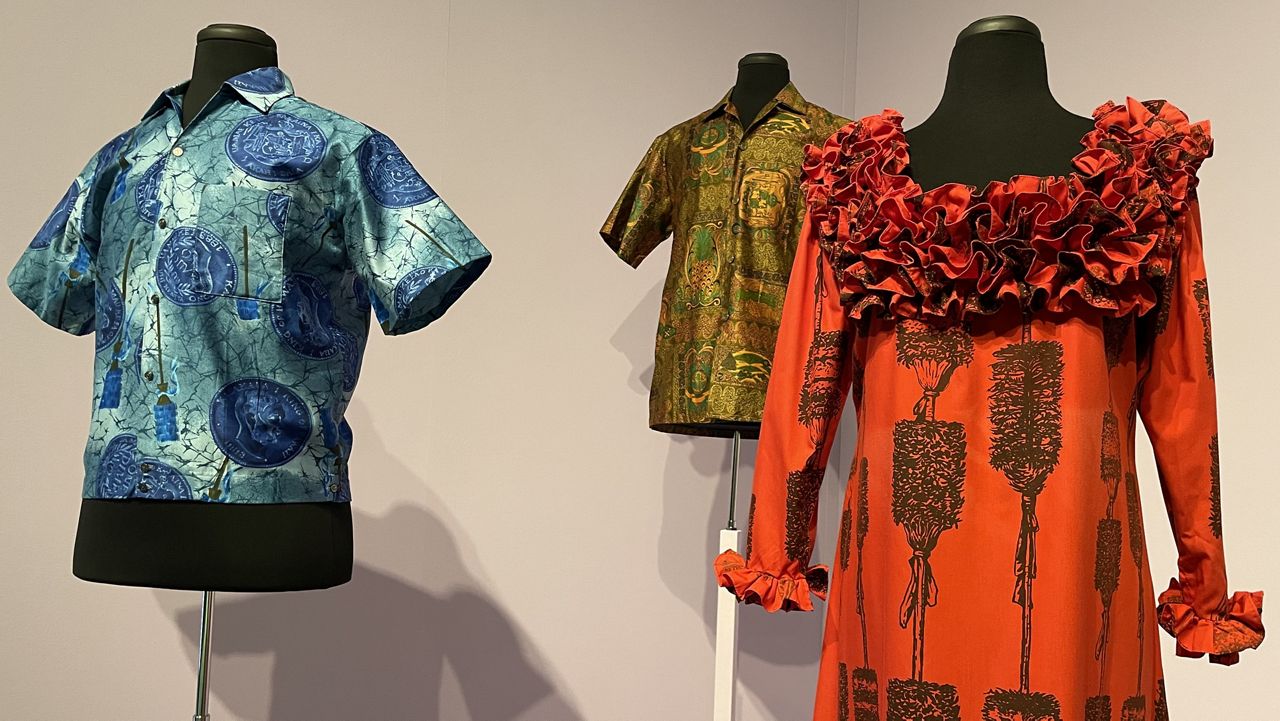
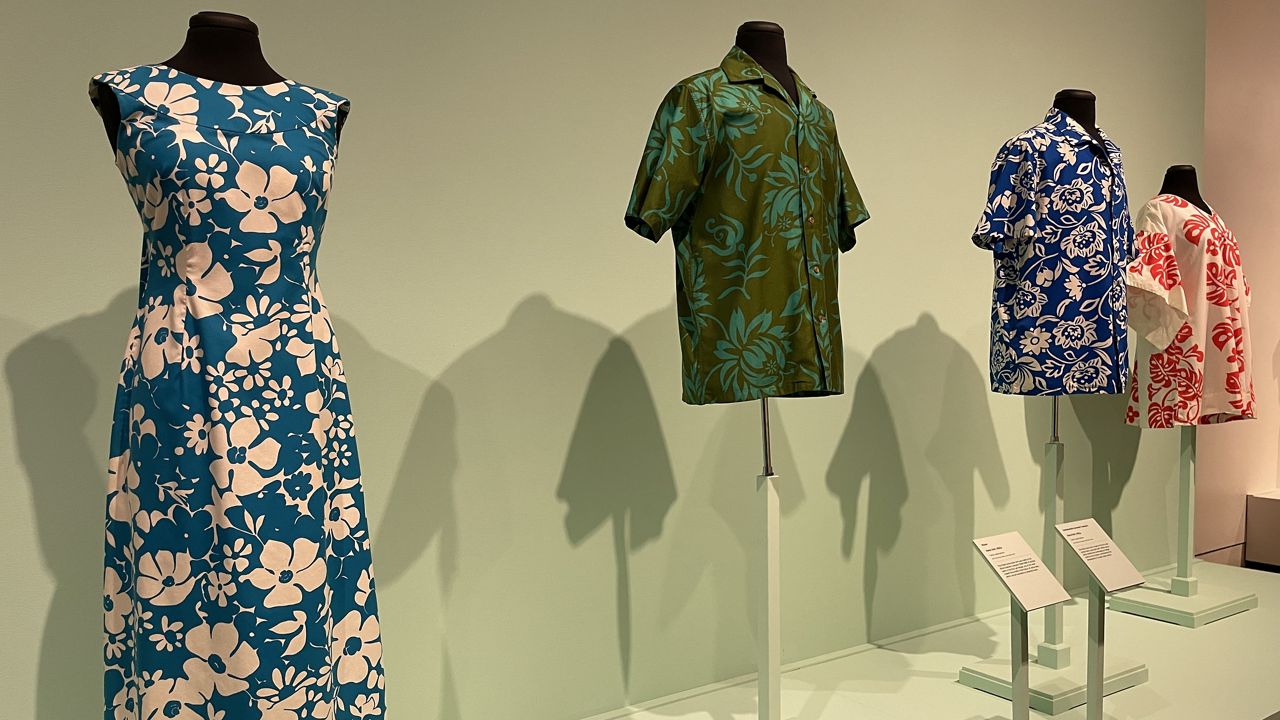
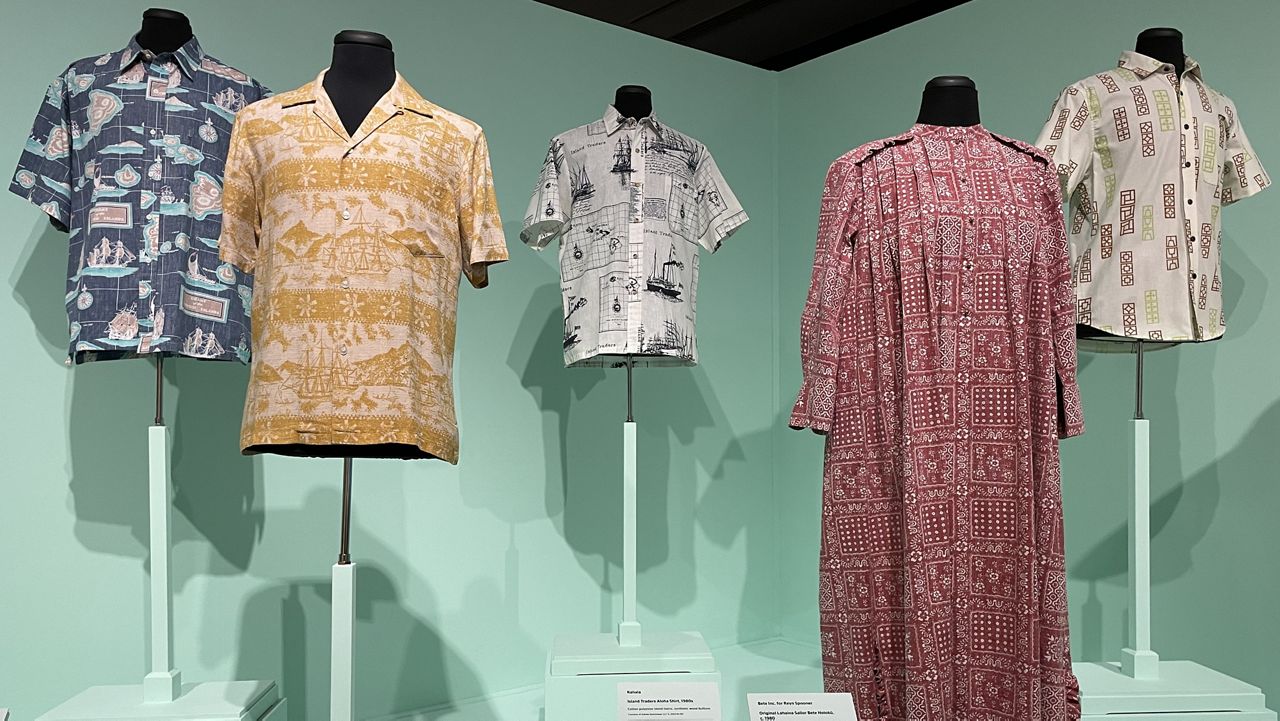
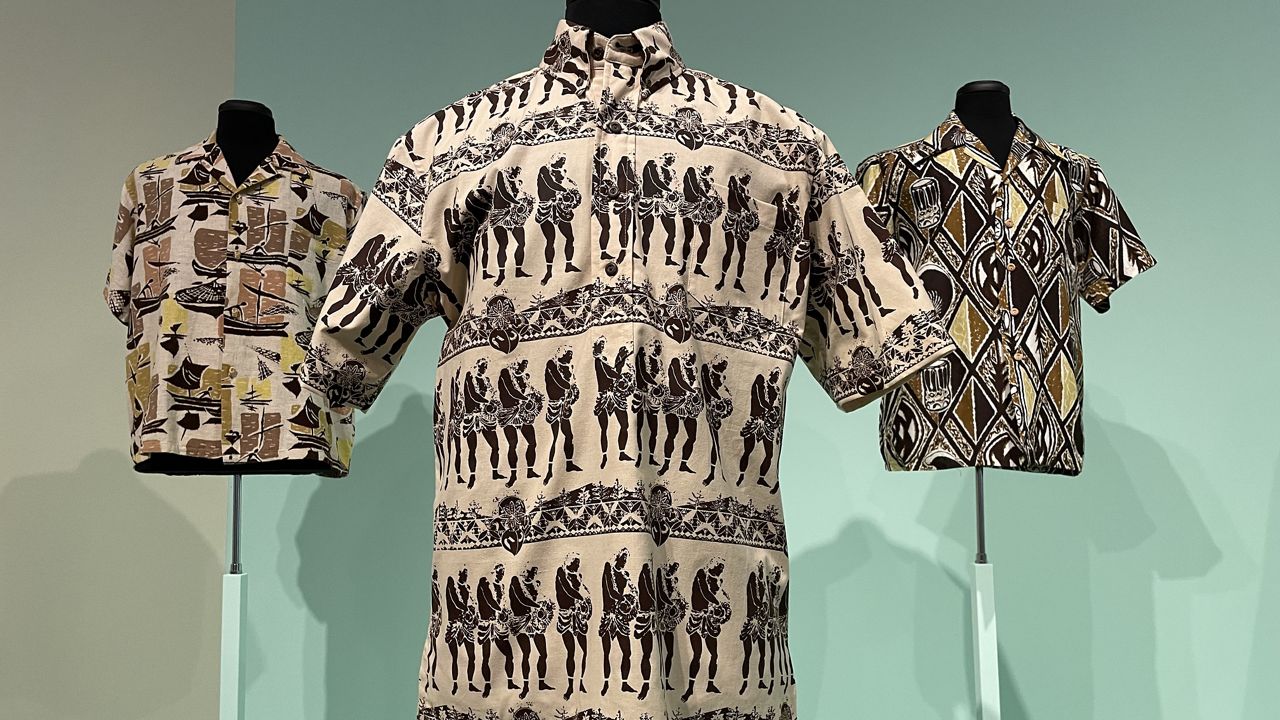
Michelle Broder Van Dyke covers the Hawaiian Islands for Spectrum News Hawaii. Email her at michelle.brodervandyke@charter.com.




